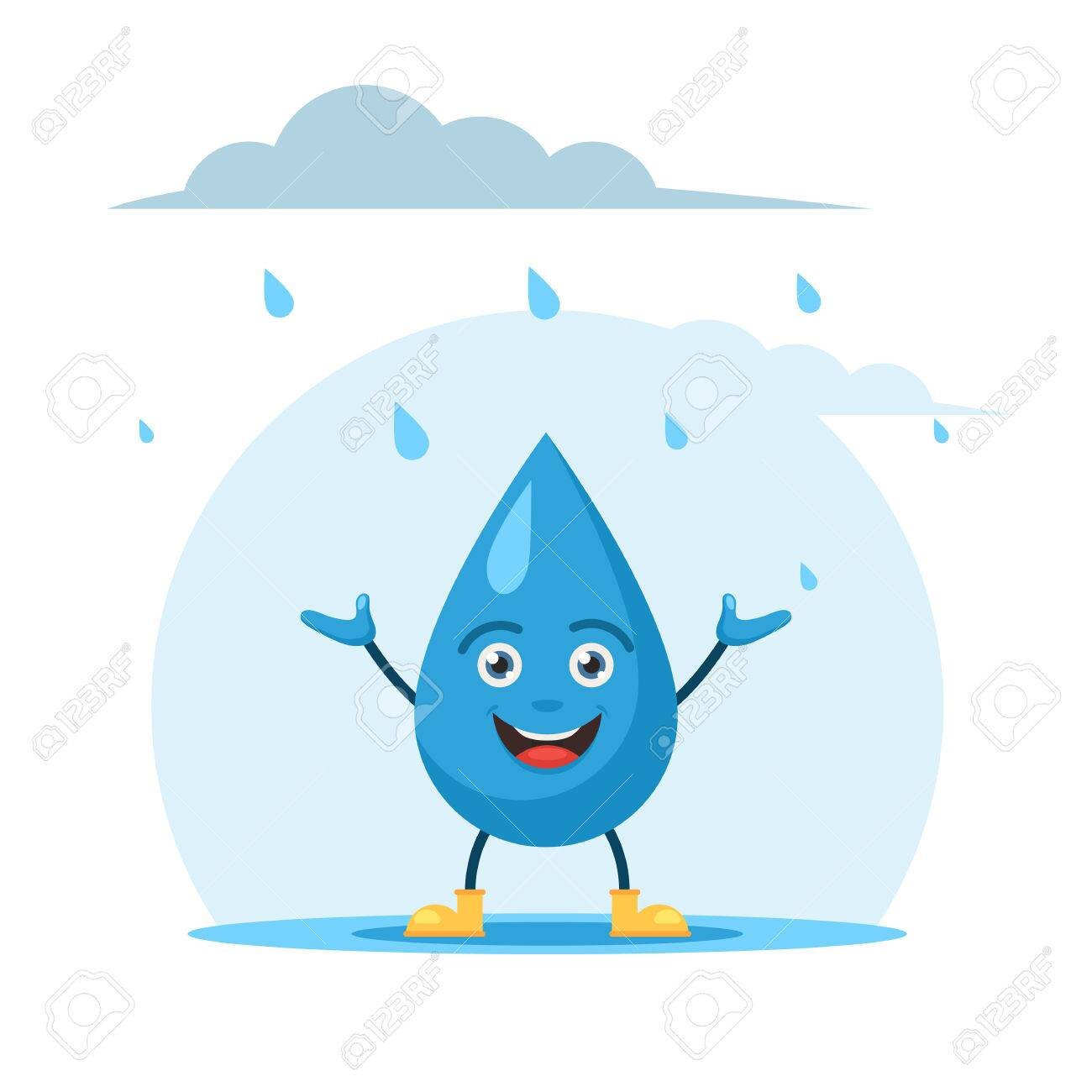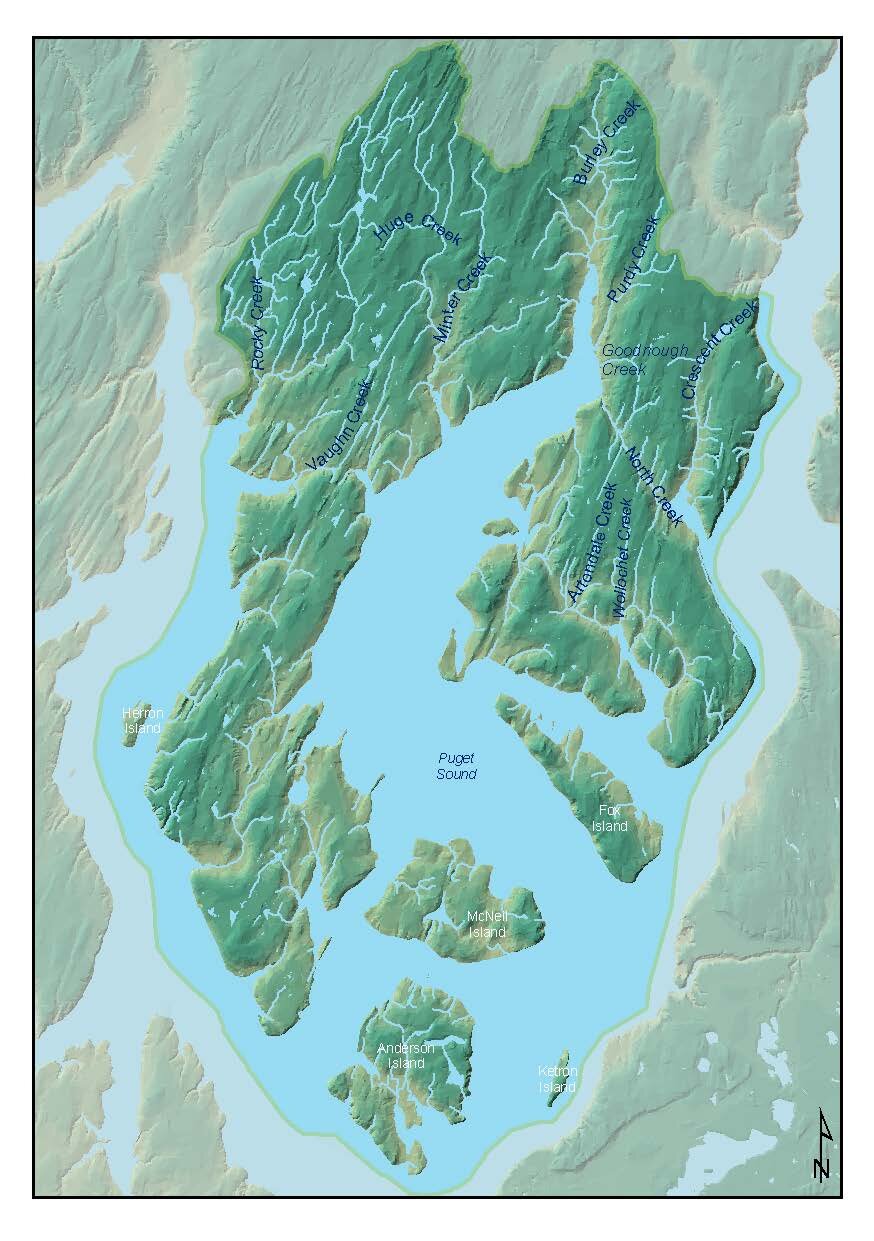Watersheds
/Photo: 123RF.com
Imagine being a raindrop. You have landed on the side of a mountain with many other raindrops. As it continues to rain, you and the other raindrops start moving down the mountain. Some of the water sinks into the ground, some gets stuck in puddles that will later evaporate and return to the sky. As you continue down, you meet up with even more raindrops in a little stream. This stream flows quickly down the mountain side and eventually you enter a river. A lot of the water you meet here is from the snow melting at the top of the mountain. You continue in this river for a long time. Sometimes you travel quickly and other times are slow and winding. Again, some water drops evaporate, others sink into the ground and some are even taken by animals as they drink from the river. Eventually, you end up in a larger body of water such as a lake, ocean or the Puget Sound. You started off as raindrop and ended up traveling through the whole watershed. The water you traveled with all came from different locations but mostly all ended up in that big body of water.
Mississippi River Watershed Photo:nationalgeographic.org
A watershed is an area of land where all of the water will drain into one location such as a large river, lake, or ocean. Watersheds can range from being small to very large. The small watersheds, such as the area of land that drains into a creek by your house, can also be part of larger ones. The largest watershed in the US is the Mississippi River Watershed which includes 31 states and 2 Canadian Provinces. It drains into the Gulf of Mexico. This means the those 31 states and 2 provinces affect the water quality of not only the Mississippi River but also the Gulf of Mexico and eventually the Atlantic Ocean.
KGI Watershed
Photo: https://www.piercecountywa.org/1864/Key-Pen---GH---Islands-Watershed-Council
To bring this idea a little closer to home, camp is on the Key Penninsula-Gig Harbor-Islands (KGI) Watershed. All of the land in this area drains to creeks and streams that then drain to the Puget Sound. The Puget Sound is then connected to the Pacific Ocean.
Not all of the water that hits the ground in a rainstorm will end up making the full journey through the watershed. Some of it will evaporate back into the air. Some will sink underground and be taken up by plants or go into underground water storage called an aquifer. Also, some water will be used by animals and people. Watersheds are important because they supply water to all of these places. This is also why it is important to keep our watersheds healthy.
Think back to being a raindrop. Maybe on your journey down the mountain, you pass some litter that is pushed by the water around you into the stream, then the river, and eventually into the ocean. That litter makes the same long journey you do as a raindrop. Pollution in the watershed happens in one of two ways: Point Source Pollution and Non-Point Source Pollution. Non-Point Source Pollution would be like the litter that was carried down the mountain with you because while you were carrying that litter, so were many other raindrops in many other points of the watershed. We would not be able to tell exactly where that pollution came from. Another common Non-Point Source Pollution is oil that is washed off streets an into the waterways. Point Source Pollution can be traced to a single location. For Example, if you were kayaking in the Puget Sound and all of the sudden you say a lot of Sound View Camp stickers floating on the water, you would know exactly where those stickers came from. A more real-life example might be a sewage leak from a single pipe or chemical leak from a factory.
No-matter what the pollution is, it will affect the rest of the watershed downstream from where it started. This means pollution can ad up quickly. However it is also something we can fix! By picking up trash, telling an adult about a leak/spill, and using your resources wisely, you can help protect a whole watershed!
Try at Home:
Here is a short activity you can do to learn about watersheds:
What you will need is a piece of printer paper (it only needs one side to be blank), washable markers, water (in a spray bottle works best but any way you can drop it on to the paper is fine)
Steps:
Crumple up your paper into a ball
Carefully unfold it so that the crinkles are still raised (don’t smooth it out.)
Trace the “ridge lines,” or where the paper is raised. Thick washable marker lines work best.
Spray (or drip) water onto the paper
Watch the water and the color run down your paper mountains. Where is the water all going to? Where does it all collect? Do you have more than one watershed on your paper?
You can try this again and this time add some random dots of a different color to represent pollution. Observe where the pollution goes and how it adds up.
Make sure to dispose of your project properly.







